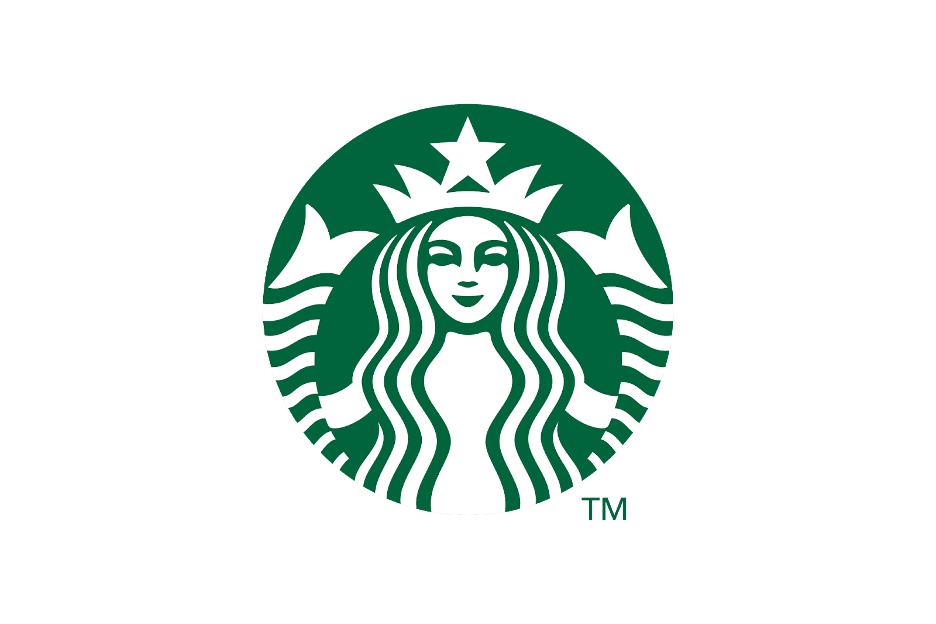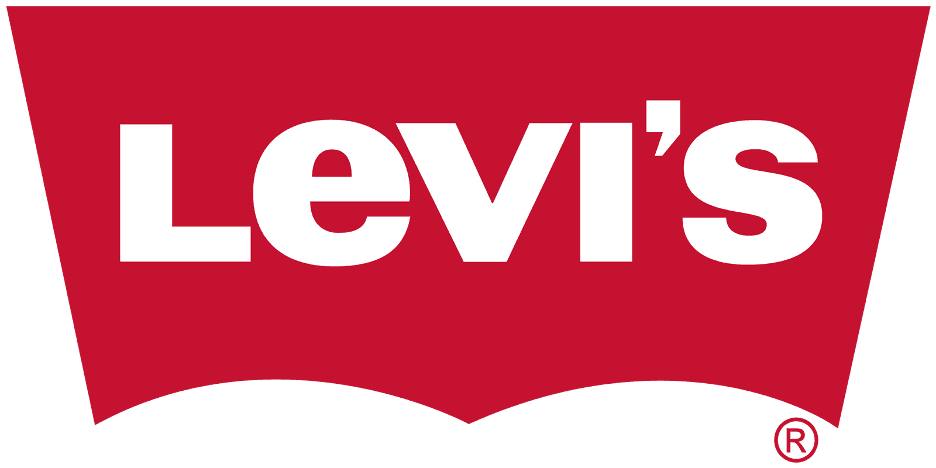Business News Daily provides resources, advice and product reviews to drive business growth. Our mission is to equip business owners with the knowledge and confidence to make informed decisions. As part of that, we recommend products and services for their success.
We collaborate with business-to-business vendors, connecting them with potential buyers. In some cases, we earn commissions when sales are made through our referrals. These financial relationships support our content but do not dictate our recommendations. Our editorial team independently evaluates products based on thousands of hours of research. We are committed to providing trustworthy advice for businesses. Learn more about our full process and see who our partners are here.
How to Create a Great Corporate Logo
A company's branding is an important part of its consumer-facing identity. No aspect of branding is more visible or immediately recognizable than a company logo.

Table of Contents
A logo is more than a fun design that catches the eye. It’s a representation of your brand that consumers should recognize immediately as belonging to your company. But how can you design such a powerful logo? The answer starts with understanding your brand through and through. In this guide, we’ll offer helpful steps to creating a great company logo as well as break down the elements you should consider when designing one.
What is a corporate logo and why do you need one?
A corporate logo is a symbol that represents and identifies your business. It distinguishes your business from others and hints at your identity and values. It also invites people to learn about your brand and helps build customer loyalty.
Perhaps most importantly, your logo goes everywhere: on your business website, social media pages, business cards, marketing materials and more. If you run a storefront, it goes there too. Think about all the Target logos you see when you shop there.
How to create a logo: step-by-step
When creating a logo, follow these steps to make sure you’re designing something that represents your brand.
1. Understand your brand
Before you get to work designing a logo, take some time to think about your brand. If you’ve already come up with some ideas about the feelings and messages you want to convey, make sure you thoroughly understand these elements and how they fit together. If you haven’t, spend some time developing your brand before going any further.
A logo should not stand alone ─ it should be closely tied to your brand and serve to reinforce it. Your logo is the first touchpoint of your brand for many of your potential customers, so you’ll want it to reflect the same values, sentiments and messages your brand promotes.
2. Conduct a team brainstorm
Bring your team together to brainstorm ideas for your logo. These ideas don’t have to be visual at first, either. Try exercises like creating a word cloud of feelings or impressions you want your logo to give off. See what ideas members of your team have in common about your brand and work to tie them together. You should end up with a clear sense of the sort of mood you want to convey through your logo.
3. Look for inspiration
There are a lot of great company logos out there, so don’t be afraid to look around for inspiration. Consider creating a moodboard and pulling elements of logos that you like together. When you can see these images laid out next to each other, you can get a clearer sense of what you might like to do with your logo. However, be sure to put your own original twist on it. After all, a logo should make people think about your brand immediately, not another company.
4. Create a design pitch deck
Once you have some detailed ideas about what might work for your logo, create a design pitch deck. These documents will include a handful of design concepts (we recommend between six and 12 options) so you can start to compare different ideas. Share this document with the team that helped you brainstorm and get their feedback on which they like best. Ask them to rank their top three and offer a few comments about what they like best.
5. Refine the concepts you like best
If there is a clear winner, get to work refining that design. If there’s not, choose two or three of the leading choices and put some more time into improving those. You’re not quite to your final design, but you’re getting closer, so spend some time making these concepts as strong as they can be. Always make sure you’re staying connected to your brand identity throughout the process.
6. Gather feedback
Once you’ve refined the design concepts further, release it for one more round of feedback. You may even want to conduct a focus group style meeting to learn more about the first impressions someone has when they see each design. Go beyond simple likes and dislikes. Ask the room what words and feelings come to mind when they see each logo. If a design elicits a lot of words that came up during your brand brainstorm, that’s a good sign.
7. Make revisions and finalize your design
Following the final round of feedback, you’re ready to make your last set of revisions and finalize your logo. At this point, you should be confident that your logo offers a strong depiction of your brand and conveys the same values and messages you want your brand to embody. Once your revisions are complete, take a step back and review your logo. If you’re satisfied that it’s the right one (and, if you know your brand well, you should be able to feel that when you look at it) then congratulations, your logo is complete.
8. Update your marketing materials
Now that your logo exists, update all your marketing materials to include it. It should go on business cards, brochures, flyers, websites, social media platforms — anywhere your brand is represented, your logo should appear prominently. You may even want to create some merchandise, such as T-shirts and hats, for your staff. Who knows? Some of your customers may even want to buy apparel, helping to spread your new logo far and wide.
What to consider when creating a logo
According to C+R, the most effective logos are wordless and minimalist. Dan Ferguson, chief marketing officer at Adore Beauty, advises businesses to keep logos consistent, simple and memorable.
“Whether you’re starting from scratch or just want to give your logo a facelift, think carefully about the colors, shapes, patterns and fonts you use and the emotions they create around your brand,” he said. “If there is a mismatch between your identity, values and logo, it can lead you down the difficult path of trying to market a disengaging or downright confusing brand.”
Ferguson offered the following insights on different logo elements and what each can convey to consumers.
Color
Color psychology plays a massive part in the messages your logo sends and how consumers interpret those messages, said Ferguson. What do your logo colors say about your brand? What emotions do your colors elicit?
Research by 99designs shows that consumers associate warm colors like red and orange with passion, vigor and energy while cool colors like blue and green are associated with tranquility, refreshment and nature.
Shapes and lines
Logo shapes mean more than you may think. They can enhance your overall brand meaning and provide further insight into your identity and emotional messaging, Ferguson noted:
- Circular: Circular designs can convey ideas of positivity, endurance, community and even femininity, such as the World Wildlife Fund and Chanel.
- Square: Square designs or those that use sharp, hard edges connote balance, symmetry, strength, professionalism and efficiency, such as Adobe and National Geographic.
- Triangles: Triangles communicate messages intended to be masculine, powerful, scientific, legal or even religious, such as Adidas and Google Play.
- Horizontal: Horizontal lines impart emotions associated with tranquility and community.
- Vertical: Vertical lines are more related to strength, aggression and masculinity.
Font
Just like colors, fonts become identifiers for your brand and behave in a similar way to shapes. What messages do your fonts carry or reveal about your brand?
- Angular: Angular fonts can reveal your brand identity as dynamic and assertive while gentler, rounded typefaces come off as youthful and soft.
- Bold: Bold fonts are more masculine, while cursive fonts are more feminine.
Ferguson notes that one font in a logo is ideal, but don’t mix more than two fonts. Whatever you choose should be clear and easy to read.
Words vs. no words
You should use a consistent font in your marketing emails, graphics and other visual materials. Email marketing services like Mailchimp often prioritize logo use. (Read our Mailchimp review to learn more.)
However, you don’t need words in your logo, although they’re generally recommended for smaller, newer businesses.
Think about it: Can your company convey its message with just an image before becoming a household name? The answer lies in how a handful of corporate logos have changed over time.
Once upon a time, Adidas, Shell and NBC all had symbols and words in their logos ─ a “combination mark.” Each logo included the company’s name under the image. Over time, as these companies became trusted household names, they became identifiable on image alone. They dropped the name and left behind a visual-only logo known as a “brandmark.” The result is a crisper, more compact ─ but no less identifiable ─ logo.
Target audience feedback
Your logo is among the key ways you’ll reach your target audience. It only makes sense, then, to get your audience’s feedback on your logo. Focus groups consisting of your target customers can help here. What is it about your colors, shapes, lines and fonts that has a meaningful impact on them? What misses the mark?
Once you have the answers to these questions, you can incorporate this feedback into a revised logo. You might also want to present more than one logo option to make the most of the occasion.
Different logo options
If you invest all your time and energy into developing only one logo, you might get tunnel vision and fail to consider some glaring flaws. That becomes a nonissue when you draft several logo options. You can bring all these options to a focus group to determine the most impactful. Then, with the group’s feedback, you can adjust the logo to further strengthen its impact.
What you can learn from household name corporate logos
While the C+R study found that each company’s revenue sometimes fluctuated around the time of logo change, there was no consistent correlation. The conditions surrounding a redesign and the actual product or service are likely more important, said Matt Zajechowski, former outreach team lead for Digital Third Coast.
“One thing this analysis confirms is that a lot of marketers who are fretting about the relation of brand aesthetic to revenue should probably be turning their attention to other things first,” Zajechowski said. “There was no consistent, noticeable correlation that showed different logos lead to more or fewer sales. … The most interesting pattern we noted is that many major brands, particularly tech brands, fuss with their logo a lot in the early years. Then, as soon as they take off and experience explosive growth, they back off the logo and leave it alone. Amazon, Microsoft and Twitter are great examples of this behavior.”
So, what else can we learn from C+R’s findings? Below are some key takeaways from four corporate giants included in the study.
Starbucks

Source: Starbucks
Starbucks, the ubiquitous coffee shop, was established in 1971 with a retro, brown version of its now well-known circular logo. It first added the green-and-white color scheme in 1987, then updated it with a sleeker style in 1992.
In 2011, Starbucks dropped the text “Starbucks Coffee” from its logo entirely, leaving just the central image. Each rebrand was a new iteration of the same logo, with minor changes, often in the direction of a sleeker, more minimalist style.
Apple

Source: Apple
Founded in 1976, Apple launched with a drastically different logo than the well-known apple it boasts today. The following year, Apple underwent a redesign that introduced the first Apple logo with a rainbow color scheme.
In 1998, Apple rolled out two new logos based on the same image: one in black and the other in light blue. In 2001, Apple’s chrome logo debuted. Then the company started to increase sales and, in 2007, debuted another chrome apple logo with a shimmery new finish.
Finally, the company introduced a new iteration of the simple black Apple logo, which it still uses today.
Apple’s logo redesigns almost always seem to be moving toward a futuristic or advanced feeling. These efforts would naturally be helpful to a big technology company’s brand.
Amazon

Source: Amazon
After incorporating in 1994, Amazon rebranded in 1997 with two new logos, one of which would go on to serve as the basis for its modern “Amazon.com” imagery. One year later, the company developed two more logos. In 2000, Amazon rebranded yet again, this time sticking with the logo for the long haul.
Amazon has cultivated a brand around one image after iterating six different logo designs in its first six years of existence. Importantly, Amazon began as a bookseller, then expanded to “books, movies and more,” and now has a hand in seemingly everything. It’s common for a company to rebrand when the business model changes or expands.
Levi’s

Source: Levi’s
Levi’s is known for one major product: jeans. This famous denim company was established in 1853 and only once changed its logo – in 1936, to today’s red-and-white Levi’s imagery. The brand has used the same logo ever since.
With such an iconic name ─ Levi Strauss ─ attached to an easily identifiable product, it’s worth asking if Levi’s ever needed much of a logo redesign beyond the simple, recognizable logo designed in the 1930s.
When should you change your logo?
Here are some instances when you should consider a logo change:
- Your logo’s style is outdated.
- Your company is expanding its product line.
- You are merging with another company.
- You want to reduce negative associations with the brand.
- The brand has globalized, making language less relevant.
What are the risks of logo redesign?
These are some potential downsides of a logo redesign:
- If consumers are attached to the existing logo, a redesign could backfire and hurt sales.
- Seeking feedback prior to release from focus groups, for example, can expose weaknesses in the redesign.
- Change doesn’t always mean progress.
A good logo is a powerful logo
When you design a logo with your brand top of mind, you can create something that sticks out in the minds of consumers. The more you reinforce your logo and actively tie it to your brand digitally and in the physical world, the stronger the connection will be for consumers. That can help elevate your brand to new heights and drive more business in the long run, not to mention boost customer loyalty. So, when you’re designing your logo, take your time to make sure it’s more than just a cool image. Instead, work to create a logo that stands as a true representative of your brand and business.
Tejas Vemparala contributed to this article. Source interviews were conducted for a previous version of this article.














